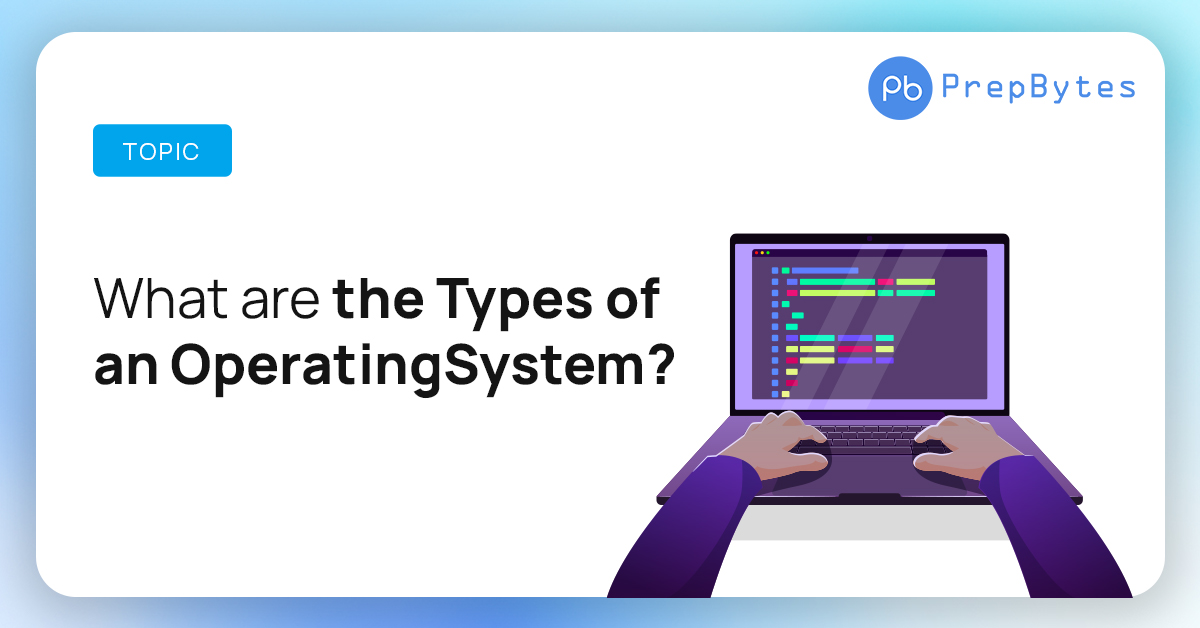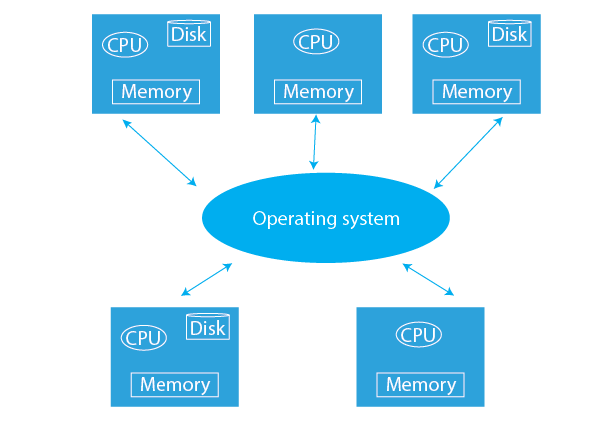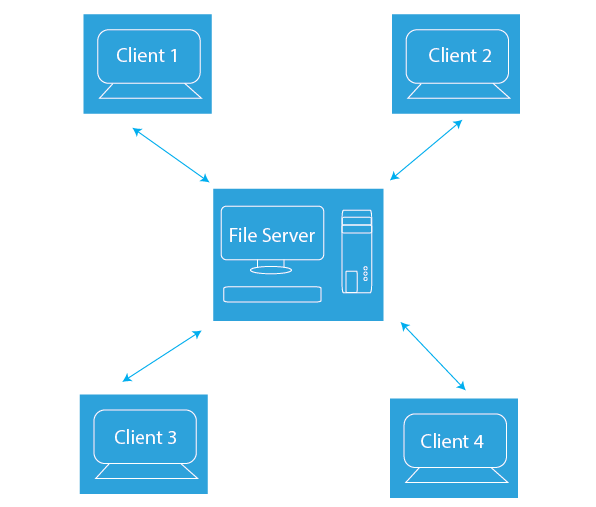In this article, we will discuss the different types of operating system. So, let’s get started.
Types of Operating System
There are different types of Operating Systems. Each type has its own advantages and disadvantages. Let’s discuss the different types of operating system in detail.
Batch Operating System
It is the oldest type of operating system. In this type of operating system, we require a human who is designated as the operator. The work of an operator is to sort the jobs that have the same or similar requirements and group them into batches. Similar jobs are batched together on a hardware (card) and the card is inserted into the CPU and these jobs are performed. These jobs used to take a lot of time to get completed.
Advantages of Batch Operating System
- The idle time for the CPU is very less.
- The same batch of jobs can be used by multiple users.
- Since similar jobs are batched together, resource management is efficient in this Operating System.
Disadvantages of Batch Operating System
- As already discussed, the jobs took a long time to complete and the time of completion cannot be predetermined.
- These operating systems make it hard to debug the problems.
- If a job fails, there is no preemption. This means that the other jobs in the queue would have to wait for an unknown amount of time to get executed.
Examples: Payroll Systems, Bank Statements. etc.
Time-Sharing Operating System
Time-sharing Operating System is another type of Operating System that focuses on reducing the idleness of the CPU. In a time-sharing operating system, each task is given a particular amount of time to execute. This time is called quantum. After each quantum, the currently executing task is put on hold or terminated (if it is completed) and the CPU moves to the next task to execute it. The systems using the time-sharing operating system are called Multitasking Systems. Unix is an example of a time-sharing operating system.
Advantages of Time-Sharing Operating System
- The idleness of the CPU is reduced.
- Every task in the Queue gets an equal opportunity (equal amount of time = quantum).
Disadvantages of Time-Sharing Operating System
- The security and integrity of the data and programs are not very good.
- The time-sharing operating systems are less reliable.
Distributed Operating Systems
In distributed operating systems, the devices are loosely coupled with each other. This means that various devices are connected to each other using a common (shared) communication network. We can say that they form a peer-to-peer distributed system such that every device has its own memory and processor and can execute programs and access data that are present in other peers.
This is helpful in the case when a large network is set up and say if a few of the peers don’t work, we can use other peers to access their data and execute programs. It can also be used as a supercomputer by combining the computational power of the peers connected in a network.
LOCUS is an example of a distributed operating system.
Advantages of Distributed Operating System
- As already discussed, in case of a failure of some of the peers, others can carry out the operation.
- The resources can be shared to such an extent that a supercomputer with high computational power can be created out of a distributed system network.
- There is no excess load on any one peer.
- This is a very scalable system i.e. it is very easy to add more peers and build a large distributed network.
- The overall speed is very fast as there are multiple processors and multiple memory units working together.
Disadvantages of Distributed Operating System
- These networks are very costly to be established.
- Once established, the cost of maintenance of a distributed network is very high.
- Distributed operating systems are complex to build and understand. They are still being understood as this is a very new and immersive technology.
Network Operating System (Server Based Systems)
These systems are called tightly-coupled systems. These server-based solutions enable the management of data, users, groups, security, applications, and other networking tasks. Over a small private network, these operating systems enable shared access to files, printers, security, programs, and other networking features. The fact that every user is fully aware of the underlying setup, every other user on the network, their particular connections, etc., is another crucial feature of network operating systems.
Microsoft Windows Server 2003 and 2008, Mac OS X, Linux, Unix, etc are some important examples of network operating systems.
Advantages of Network Operating System
- The servers in these operating systems are very powerful and highly stable.
- Security is very high in network operating systems.
- The servers can be accessed remotely also.
Disadvantages of Network Operating System
- The dependence on the server creates a centralized system where the majority of the authority is with the server. This means that for almost every small to large task, there is a huge dependence on the server.
- Servers are costly and so is the maintenance. Also, the updates should be done regularly.
Real-Time Operating System
Real-time systems are served by these kinds of OSs. The amount of time needed to process inputs and respond to them is comparatively short. This small period of time is called the Response Time.
When there are extremely strict time constraints, such as with missile systems, gaming systems, robotics, etc., real-time systems are used.
The real-time operating systems are further of 2 types:
1. Hard Real-Time Operating Systems: Extremely strict time constraints are to be taken care of in these kinds of systems. For instance, a missile launch system.
2. Soft-Real Time Systems: A robot or a game needs to respond instantly at the click of a button, however, it would do no harm if it is not as precise as a missile launching system. This is exactly the logic behind soft real-time operating systems.
Advantages of Real-Time Operating Systems (RTOS)
- The resources are utilized to their maximum extent. Hence, we get high throughput.
- These types of systems are really accurate and mostly free from any errors and bugs.
- These types of systems have the best memory management. Also, full deadlock prevention mechanisms are present in these kinds of operating systems.
Disadvantages of Real-Time Operating Systems (RTOS)
- These operating systems are usually designed for performing only a particular task. So, they can not be commonly used for any generic task that might be possible in any other operating system.
- These systems are highly expensive.
- They are complex to understand and build.
- Very high-quality hardware requirements so that there should not be even any minute delays.
So, these are the different types of operating system.
We hope that you have understood this article and have gone through all these types of operating system. We also hope that all you concepts have been cleared from this article and we’ll see you again soon at PrepBytes.





